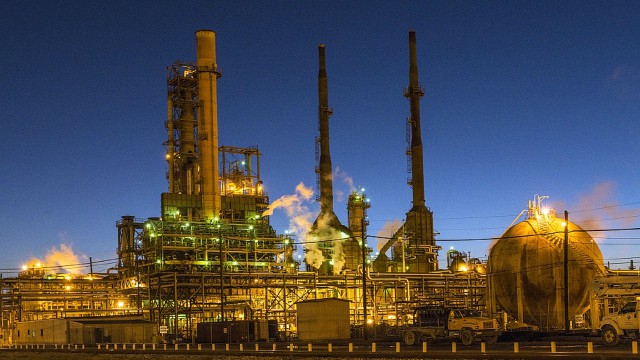Despite oil’s latest volatility and recent claims that prices could collapse once again, the downside for crude appears limited. While oil does appear range bound, there are signs that North American benchmark West Texas Intermediate (WTI) will rally higher before the year’s end.
This makes now the time for investors to bolster their exposure to the oil patch. One of the best means of doing so is Vermilion Energy (TSX:VET)(NYSE:VET). The upstream oil producer was one of the few to retain its dividend, despite oil collapsing at the end of 2014, and its latest pullback, which sees it down by 13% for the year to date compared to WTI’s 16% gain, has created an opportunity.
Now what?
Vermilion owns and operates a globally diversified portfolio of oil and gas properties spanning North America, Western Europe, and Australia. The driller has net oil reserves totaling 270 million barrels, which are 44% weighted to light and medium crude. The company reported some solid second-quarter 2018 results.
These include a 20% year-over-year increase in production to 80,706 barrels daily, which is a particularly important attribute for an energy company in an operating environment where crude is rising in value. This leaves Vermilion well positioned to achieve its 2018 guidance; Vermilion has projected that daily production will average 86,000-90,000 barrels, which represents an increase of at least 26% over 2017.
The solid production growth can be attributed to Vermilion’s $1.4 billion acquisition of Spartan Energy, a private light-oil producer operating in southeastern Saskatchewan and southwestern Manitoba. The driller has also bolstered capital spending since issuing its original 2018 production guidance by $185 million to $500 million. This will allow it to significantly increase the tempo of exploration and well development activities, which will support further production expansion.
The quality of Vermilion’s assets is underscored by the strong operating netback that they generate.
You see, operating netback is a key measure of the operational profitability of the assets of upstream oil companies. For the second quarter, Vermilion reported an operating netback of $32.85 per barrel produced, which is higher than many of its Canadian peers. This is in part because of its international operations, which allow it to access Brent pricing for a proportion of its oil output.
Brent — the international benchmark for oil pricing — is trading at a US$9-a-barrel premium to WTI, giving Vermilion earnings a solid lift compared to those upstream oil producers operating in North America that only access WTI pricing.
Another pleasing aspect of Vermilion’s operations is the strength of its balance sheet. Unlike many of its Canadian upstream peers at the height of the oil boom, it didn’t load up debt to expand its operations.
As a result, Vermilion was better positioned to weather the prolonged slump in oil, which is why it wasn’t forced to eliminate its dividend — unlike other upstream producers. The company finished the second quarter with $39 million of cash on hand and long-term debt of $1.6 billion, which is a manageable 2.5 times operating cash flow.
That cash — along with unused $373 million on its revolving credit facility — provides Vermilion with considerable liquidity, which endows it with the financial flexibility required to weather another downturn in oil. It also means that Vermilion can further increase spending on exploration and development activities if crude firms, further expanding production.
So what?
Vermilion is an attractive means of playing higher crude and its latest pullback has created a handy opportunity for investors. While they wait for the strength of its operations to boost its price, patient investors will be rewarded by Vermilion’s sustainable monthly dividend, which yields a juicy 6.4%.








